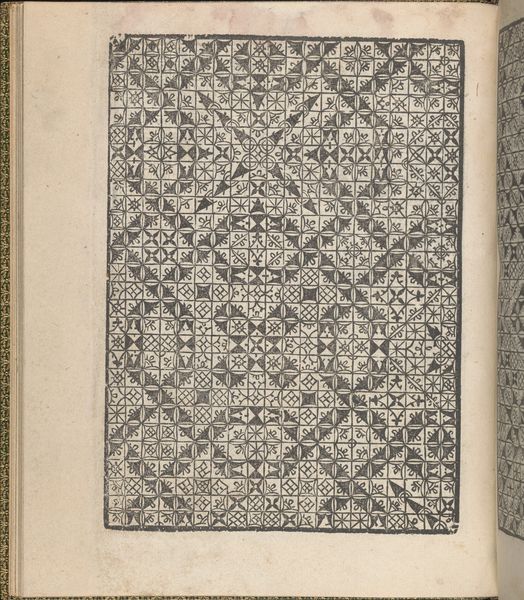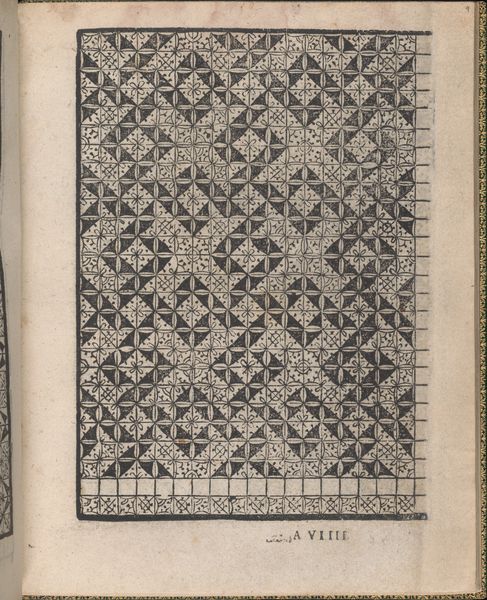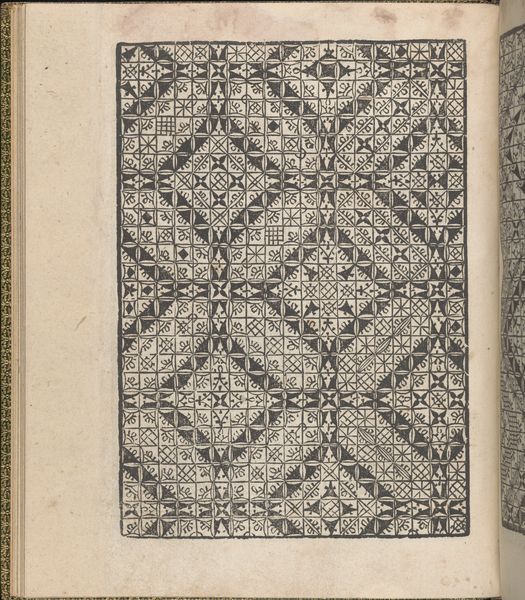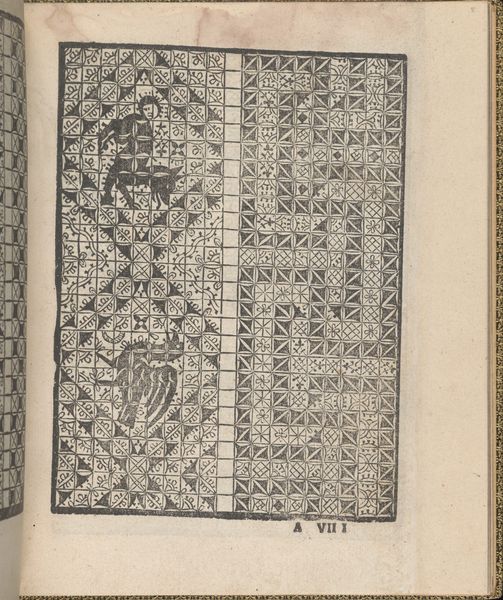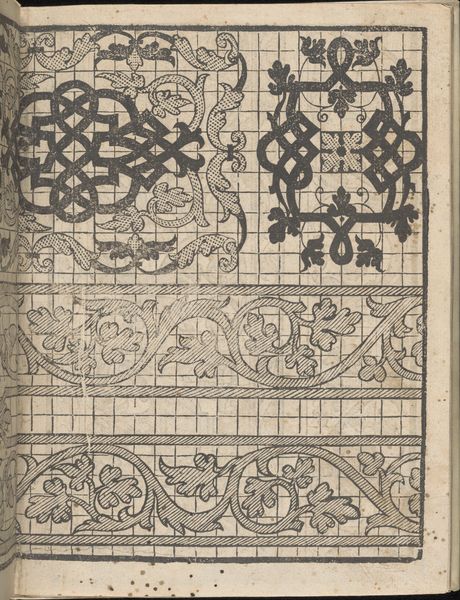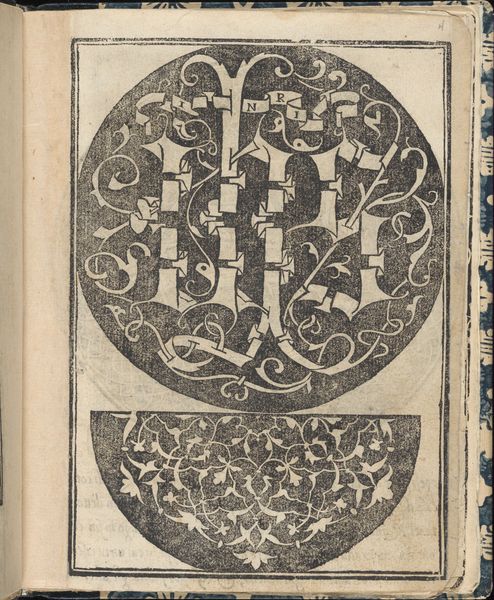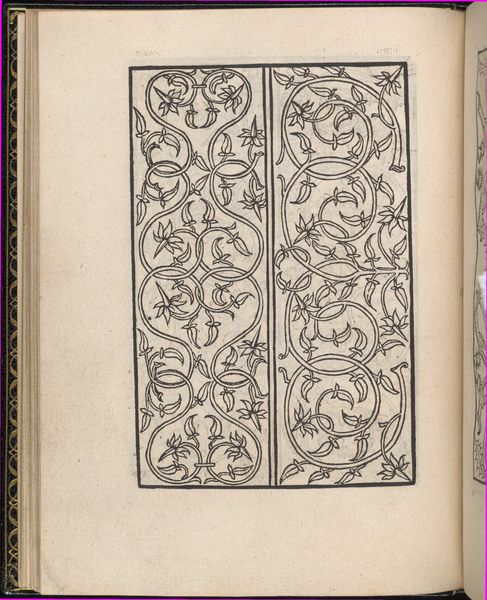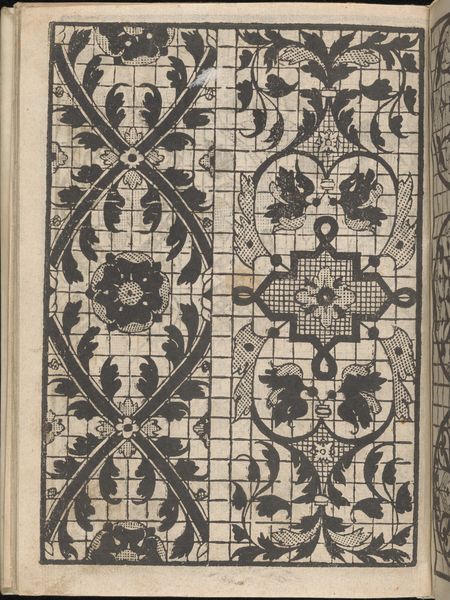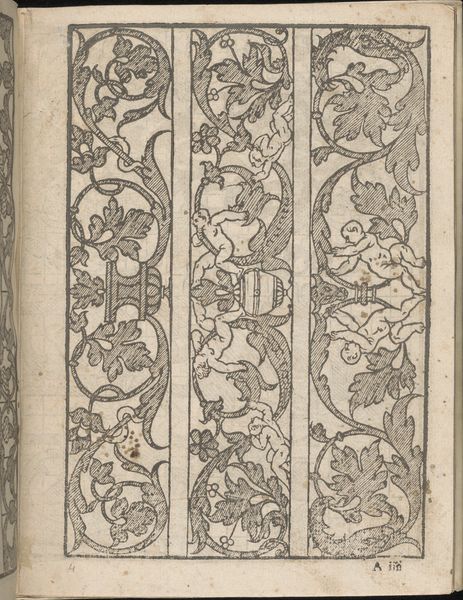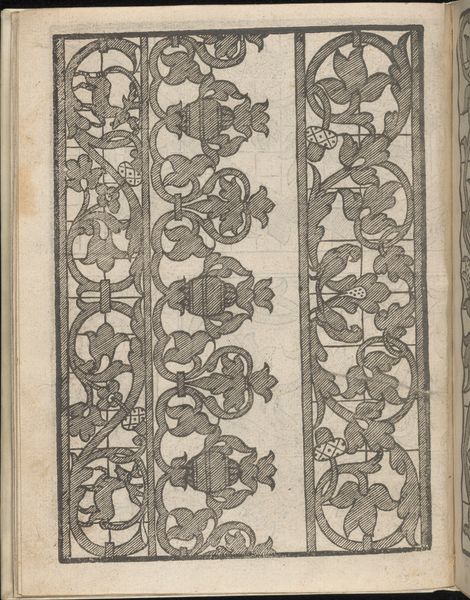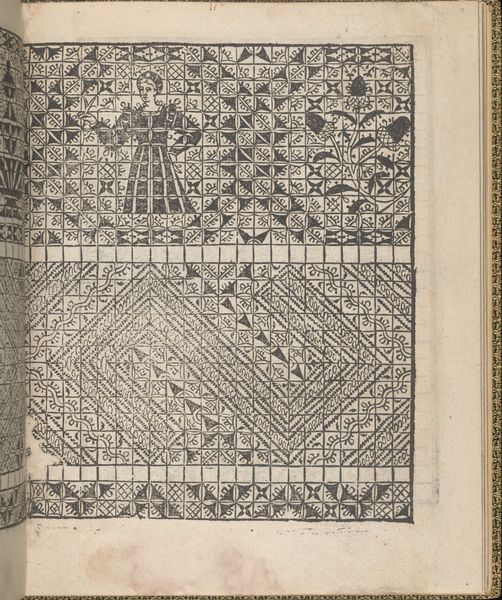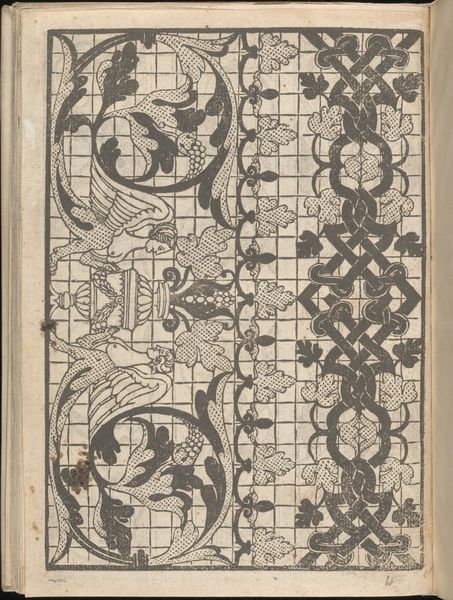
Giardineto novo di punti tagliati et gropposi per exercitio & ornamento delle donne (Venice 1554), page 10 (verso) 1554
0:00
0:00
drawing, ornament, print, engraving
#
drawing
#
ornament
#
ink paper printed
# print
#
book
#
11_renaissance
#
geometric
#
engraving
Dimensions: 7-5/8 x 6-3/8 x 1/4 in. (19.4 x 16.2 x 0.6 cm)
Copyright: Public Domain
Curator: What strikes me immediately is the intensity of the pattern work and detail here. There's a page open from "Giardineto novo di punti tagliati et gropposi per exercitio & ornamento delle donne," or "New Garden of Cut and Knotted Stitches for the Exercise and Ornament of Women," printed in Venice in 1554, using ink on paper. Editor: Yes, that density! It almost feels overwhelming at first glance. Knowing it's from a book intended for women, teaching needlework, definitely frames it in a very specific social and historical context. It's so interesting to see how craft was disseminated and standardized back then. Curator: Absolutely. The book itself, of which this is a page, acts as a primary source for understanding 16th-century decorative arts and the role of women in their creation. We're looking at a pattern book, essentially an instruction manual democratizing access to fashionable designs, impacting taste on a wide scale. Editor: And we're speaking of "fashionable designs," this wasn't mere idle craft, was it? Labor was often tied to these practices of 'ornament', an interesting tension of labor, art, and a display of refinement. There's also something about the black and white of the print that lends it a certain starkness, underscoring, perhaps unintentionally, the meticulous, even laborious, nature of the craft it's depicting. Curator: Precisely. These pattern books provided designs that were circulated within the private domestic spheres but also crossed boundaries, informing professional embroidery and lacemaking, affecting even the church vestments of the time. The 'ornament' produced was by no means apolitical. Editor: It speaks to the historical agency women possessed. That they weren't simply passive recipients, but active participants in, and even shapers of, their own visual world, the decorative vernacular of the time. Curator: And it's also about control of information and the creation of knowledge within a gendered framework. Books like these dictated how beauty and skill were defined and performed. Editor: I'm also drawn to the way it merges utility with artistry. This isn't just functional, it anticipates an elevated, even artistic creation. The work gives us a clear example of how to look critically at art and understand it as an archive of social practice. Curator: This page is evidence that beauty has always been deeply tied to social and economic factors, a material record reflecting the values and aspirations of the era.
Comments
No comments
Be the first to comment and join the conversation on the ultimate creative platform.
